
Microplastics are a problem that doesn’t seem to be going away anytime soon.
Microplastics are small plastic pieces that are less than five millimeters big — about one-eighth of an inch. There’s a subcategory of microplastics called nanoplastics, which are even smaller. Nanoplastics range from one nanometer in size to one micrometer (μm). To put that into perspective, the width of a single human hair is 20 to 200 μm.
Their small size doesn’t reflect their risks to human health, though.
Research published in The New England Journal of Medicine links microplastics with a higher risk for heart disease, strokes and death. The study looked at 304 patients who had undergone procedures to clear a major artery in the neck. Fifty-eight percent of them were found to have microscopic and nanoscopic “jagged-edged” plastic pieces in the plaque lining the blood vessel.
Unfortunately, it’s becoming clear that these plastics are hard to escape. The following are foods and drinks in which researchers have found notable levels of microplastics.
1. Rice

Researchers from the University of Queensland in Australia tested rice for the presence of seven different plastic types from the most common plastic (polyethylene) to plastics used in clothing and food production, laminates, technical engineering, polystyrene, acrylics and tube piping.
They concluded that people consume three to four milligrams of plastic for every 100 grams of rice they eat. That number is even worse for instant rice, though, jumping to 13 milligrams of plastic per serving.
There is a precaution consumers can take. Washing rice can reduce the presence of plastic by 20% to 40%.
2. Apples
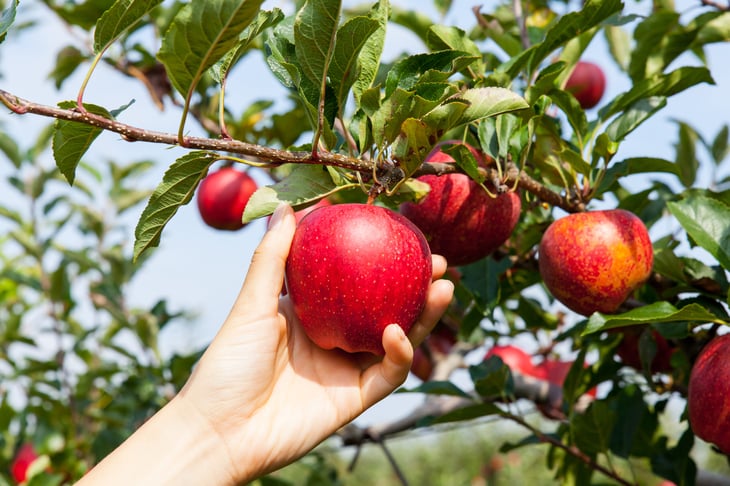
Unfortunately, our fruits and veggies aren’t safe from plastic.
Fruits are typically more contaminated than veggies, and apples are the most contaminated fruit, according to a study published in 2020 by the journal Environmental Research. Researchers from the University of Catania say they found about 52,600 to 307,750 microplastics within the various fruit they sampled.
3. Carrots
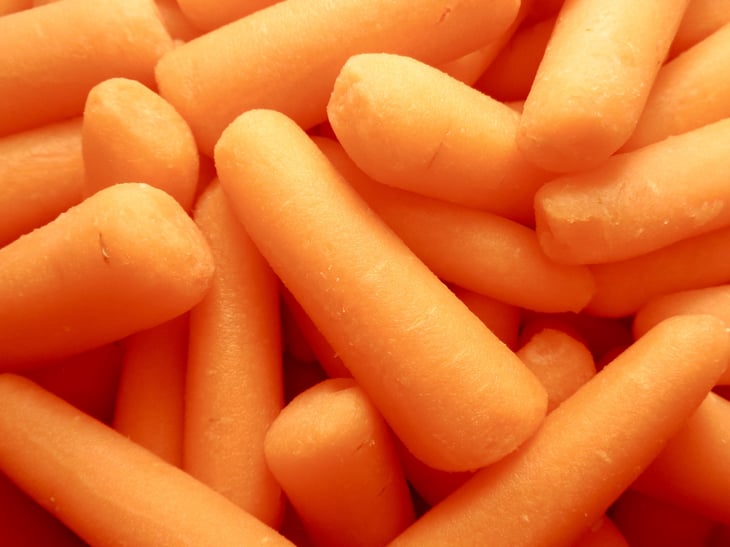
The same University of Catania research concluded carrots are the most contaminated vegetables with regard to microplastics. The study states that about 72,175 to 130,500 microplastics were found within vegetable samples.
Scientists speculated for decades that plastic particles were too large to pass through the physical barriers of intact plant tissue. However, research from 2020 calls that into question. Root vegetables were actually found to be most at risk of microplastic contamination. Certain microplastics may be small and flexible enough to penetrate through plant roots in the soil as a result of contaminated water.
4. Salt
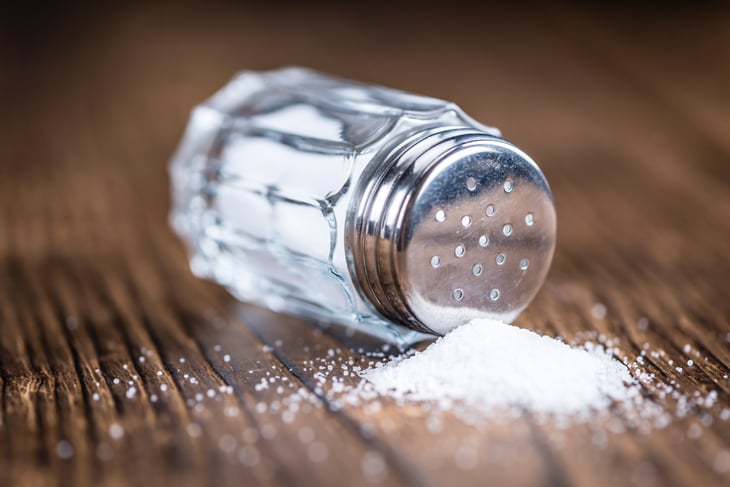
A study published in Environmental Science & Technology analyzed 39 different salt brands globally. More than 90% of sampled salt brands contained microplastics. Only three of the tested salt brands were without plastic.
Researchers concluded that plastic contamination was highest in sea salt, followed by lake salt, then rock salt. Salt sourced in Asia had a higher rate of contamination.
5. Tea

Tea bags might seem more convenient than loose leaf tea, but they’re actually more risky. Tea bags made with plastic can lead to millions of plastic particles being released into tea, according to researchers at McGill University.
Note that just because a tea bag looks like it’s only made of paper, doesn’t mean that it is. Most paper tea bags use plastic as a sealant.
Researchers purchased four different commercial teas packaged in plastic tea bags. They cut open the bags and removed the tea leaves inside so that they couldn’t interfere with the findings. Researchers then heated the bags in water as if brewing tea.
They found that just one teabag at brewing temperature released about 11.6 billion microplastic and 3.1 billion nanoplastic particles into the water. That’s thousands of times higher than previously reported in other foods.
6. Bottled water
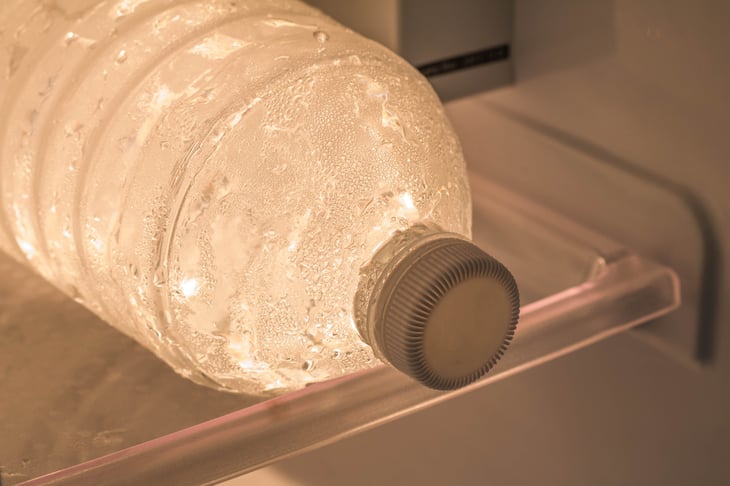
Researchers at Columbia University tested water bottles from three major brands for nanoplastics. They concluded that the average number of plastic fragments detected was 10 to 100 times greater than prior estimates.
The study, published in Proceedings of the National Academy of Sciences, doesn’t name the brands tested.
Researchers found between 110,000 and 370,000 particles in each liter of bottled water, with 90% of that being nanoplastics. The rest were microplastics. It’s theorized that plastic particles end up in the water when the bottle is squeezed or exposed to heat. Another possibility is that plastic is shaved off when the cap is opened and closed.
7. Shrimp and fish sticks
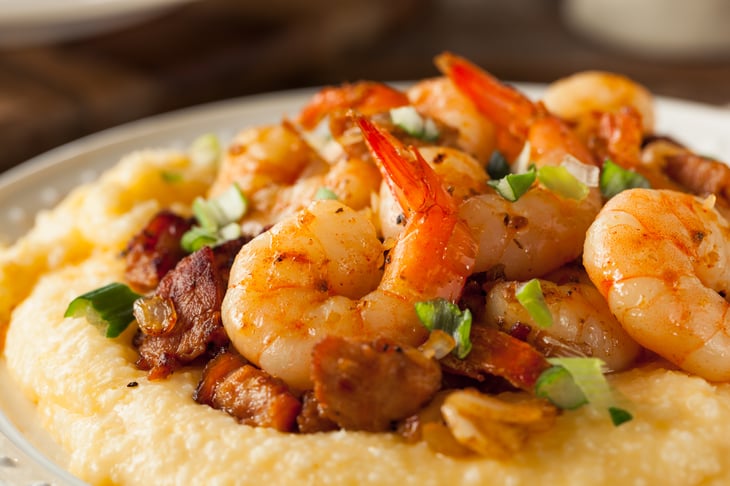
Researchers with the Ocean Conservancy and the University of Toronto estimate that American adults could be ingesting up to 3.8 million microplastics per year just from their protein consumption. They tested 16 protein types and found microplastics in 88% of samples and in every type of protein.
This includes meat substitutes, and there was no statistical difference in microplastic abundance between land- and ocean-sourced proteins. On that list were store-purchased breaded shrimp, white Gulf shrimp (headless/shell-on), Key West pink shrimp (headless/shell-on), fish sticks and plant-based fish sticks.
8. Chicken nuggets

Chicken nuggets and plant-based nuggets tested in that same study from the University of Toronto were also contaminated with microplastics.
Of all the proteins tested — including but not limited to the chicken nuggets — 44% of identified microplastics were fibers and 30% were plastic fragments. These findings fall in line with previous studies, researchers say, since fibers are the most prevalent form of microplastic in the environment.
Researchers say that while this information furthers our understanding of microplastics and our food, much more research needs to be done to understand where the microplastics are coming from and how they put our health at risk.





Add a Comment
Our Policy: We welcome relevant and respectful comments in order to foster healthy and informative discussions. All other comments may be removed. Comments with links are automatically held for moderation.